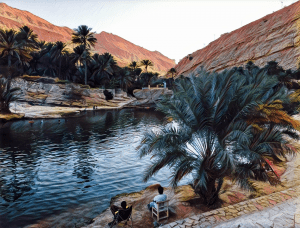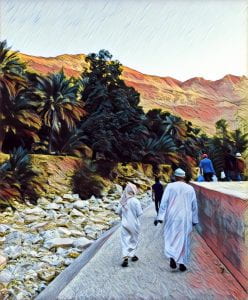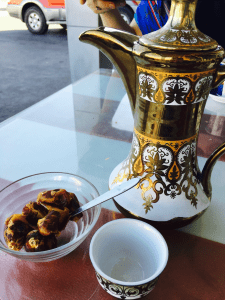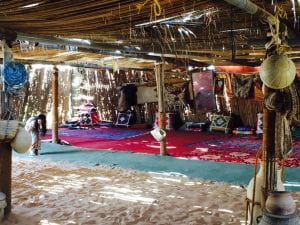The UO Urban Design Lab and the German Technical University of Oman are offering a unique opportunity for a collaborative practicum over spring break (2020) to work on a project with the Ministry of Housing in Muscat, Oman. Below are details about the study abroad practicum, the application process, and the schedule. If you have any interest and want more information, please email Lyndsey@uoregon.edu.
Recent Updates:
- The Oman Practicum is postponed until further notice.
- FAQ page is live. CLICK HERE.
- Check out the great work of our partner program UPAD at GUtech! https://www.instagram.com/whereomanwalks/
In today’s world of scarce resources, designers are called to make the best of existing conditions, retrofitting buildings and improving public space for future generations.
- GUSTAVO DE SIQUEIRA, German Technical University of Oman
- MARK GILLEM, University of Oregon Urban Design Lab
- LYNDSEY DEATON, University of Oregon Urban Design Lab
RE-URBANIZING THE CITY:
A Practicum for Sustainable Urban Renewal in Muscat, Oman.
Cities are the solution for a world with rapid growth and scarce resources such as developable land and potable water. Without effective urban designs that respect and respond to the spatial needs of the people, policymakers cannot implement strategies to sustainably accommodate growth. Symptoms of struggling systems include encroachment into historic districts, sprawl into greenfield sites, and the unleveraged potential of density. Municipal leaders are looking to drive investment back into the urban fabric by reimagining the potential of urban housing and mixed-use corridors. Yet, stigma’s about urban life persist, especially among conservative families, and a new image of the city is needed to appeal to their specific and valuable housing requirements.
 This practicum will use the lens of “a pattern language” to develop prototypes for culturally sensitive, high-density housing in Muscat, Oman. A Pattern Language by Christopher Alexander (1977) is an analytical method of establishing the architectural qualities that make a place unique and successful. This lens will help students answer questions, such as: What are the architectural patterns that make Muscat spatially successful? Can those patterns be applied to high-density design? And finally, how can designers increase the density of a community while maintaining its cultural heritage and distinct character? In the thriving commercial center of Muscat, growth is geographically constricted – like many urban areas around the world. Urban pressures are high as national law dictates that every Omani national has the right to obtain a free land plot but does not its location. Many Omani’s struggle to afford rents on land near urban areas where livelihoods are based. Part of the rent inflation is due to the missed opportunity for high-density development. Many who own urban plots adhere to cultural norms that challenge the concept of contemporary urban life. Architects and urban designers need to resolve the cultural and spatial conflicts to release housing pressures and ensure sustainable city life.
This practicum will use the lens of “a pattern language” to develop prototypes for culturally sensitive, high-density housing in Muscat, Oman. A Pattern Language by Christopher Alexander (1977) is an analytical method of establishing the architectural qualities that make a place unique and successful. This lens will help students answer questions, such as: What are the architectural patterns that make Muscat spatially successful? Can those patterns be applied to high-density design? And finally, how can designers increase the density of a community while maintaining its cultural heritage and distinct character? In the thriving commercial center of Muscat, growth is geographically constricted – like many urban areas around the world. Urban pressures are high as national law dictates that every Omani national has the right to obtain a free land plot but does not its location. Many Omani’s struggle to afford rents on land near urban areas where livelihoods are based. Part of the rent inflation is due to the missed opportunity for high-density development. Many who own urban plots adhere to cultural norms that challenge the concept of contemporary urban life. Architects and urban designers need to resolve the cultural and spatial conflicts to release housing pressures and ensure sustainable city life.
THE PRACTICUM:
A practicum a supervised opportunity to practically apply theory to a real project. Our client is the Muscat Municipality Ministry of Housing. They have asked us to develop an urban design plan and policy recommendations in a report for the community of Al Hail. In addition to the report, we will hold a professional presentation of our strategy.
Al Hail is a former fisherman’s settlement – a sprawling mono-functional but well-established neighborhood. The resident population is culturally diverse consisting of predominantly national Omanis as well as migrant Zanzibaris. The settlement is about 100.000 square meters surrounded by residential fabric, the coastline, and a Jamea (a large mosque for Friday prayers). There is also a bus line servicing the area. There is a new bus line serving the area (public transit is just emerging in Muscat).
Students will follow a rigorous curriculum starting with field investigation to document spatial patterns, followed by qualitative research methods to corroborate their findings with the cultural context. Students will review of policies and guidelines and create a matrix to compare and apply different combinations. They will break into mixed teams to develop design rules for the settlement that are culturally appropriate, environmentally sustainable, and enhance the public realm to encourage pedestrian activity. Once the patterns have been refined, students will use this language to compose a series of housing interventions that meet high standards for energy, water, and waste sustainability. Following the practicum, students will propose an independent study project for the Spring quarter. Studio work includes site visits, stakeholder interviews, in-studio work, reviews, lectures, and readings. Each team will lead a different section of the final report. Sections may include research (both with residents as well as a field survey), policy review, vision plan, planning principles, alternative development and evaluation, preferred alternative illustrative plan, phasing plan, and a form-based code with prescriptive architectural recommendations.
| COURSE CREDIT: | DATES: |
| (Option for Spring Quarter only) | 1/28 – Informational Session (LA 222, 6-7 pm)* |
| (2 credits) Graduate Students | 1/31 – Applications Due |
| (3 credits) Undergraduate Students | 2/3-4 – Applicant Interviews (required) |
| 2/5 – Final Decisions Announced | |
| 3/21-29 Practicum in Muscat, Oman | |
| *Video/teleconference available (email Lyndsey) |
RE-URBANIZING THE CITY PRACTICUM FRAMEWORK
The University of Oregon’s (UO) Urban Design Lab (UDL) invites students from the College of Design’s School of Architecture & Environment to apply for an independent study practicum called Re-Urbanizing the City. If selected, UO students will travel to Muscat, Oman over spring break 2020 to participate in the on-site practicum in collaboration with Dr. Gustavo de Siqueira and his architecture and urban design students from the German Technical University of Oman. During the practicum, students will learn:
- The diverse needs, values, behavioral norms, physical abilities, and social and spatial patterns that characterize different cultures and individuals and the implication of this diversity on the societal roles and responsibilities of architects and urban designers.
- The parallel and divergent canons and traditions of architecture and urban design including examples of vernacular, local, regional, and national settings form the middle east in terms of their climatic, ecological, technological, socioeconomic, public health, and cultural factors.
- To gather, record, analyze, and evaluate relevant data in order to develop arguments and support conclusions related to a design solution.
- To develop a pattern language from an existing built environment and then design an architectural project founded on those patterns.
INSTRUCTORS:
Dr. Gustavo de Siqueira, GUtech Primary Instructor
Gustavo will act as GUtech’s instructor of record and he will attend the on-site practicum. He will develop the program of instruction, schedule, and manage the students during the practicum with Ms. Deaton. Gustavo will lead coordination with the UDL at the UO.
Ms. Lyndsey Deaton, UDL Associate Director, GUtech Facilitator
Lyndsey will lead the on-site practicum in Muscat as a Guest Lecturer of GUtech. She will develop the program of instruction, schedule, and manage the students during the practicum with Dr. de Siqueira. Lyndsey will present lectures and facilitate research. She will lead coordination with GUtech.
Dr. Mark Gillem, UO Primary Instructor & UDL Director
Mark will act as the UO’s instructor of record, but he will not attend the on-site practicum. He will work with students to develop their independent study projects during the spring quarter and outline the specific deliverables due at the end of the term. Mark will assess student’s independent study projects and record their grades.
APPLICATION PROCESS:
Students who are seriously interested should attend the Information Session on 1/28 in rm 222 from 6-7pm. Here is a link to access the online application. Applications are due on 1/31. A panel of jurors will review the applications and independently rate them. Then, Lyndsey will contact each applicant to set up a 30-minute interview between February 3rd and 4th. The interview is an opportunity to present what you bring to the team. Contact Lyndsey@uoregon.edu for questions/comments.
SELECTION CRITERIA:
Open to students of all departments in the School of Architecture & Environment (plus Architecture History). Your application will be reviewed by a qualified panel on the basis of:
-
your passion for urban design and research with people,
-
your past experience,
-
your capacity to succeed in a practicum environment (tenacity, attitude, collaboration, etc.) and,
-
your openness to engage with new cultures and new schools of design (cultural competency).
COURSE CREDIT:
UO students interested in course credit will propose an independent project for further investigation to earn credit for the course. For 2 graduate credits/ 3 undergraduate credits this could be a research project resulting in a paper or a design project resulting in a document describing a particular space or students may negotiate the project in advance with the instructors. Building concept s and site development plans must comply with Muscat’s master planning guidelines and growth goals as well as prescriptive sustainability standards. The exact topic and requirements will be developed in collaboration with the Primary Instructor, Dr. Mark Gillem. Students will receive academic credit during the spring 2020 quarter and all students are required to present their independent projects through a virtual colloquium in late May 2020.














